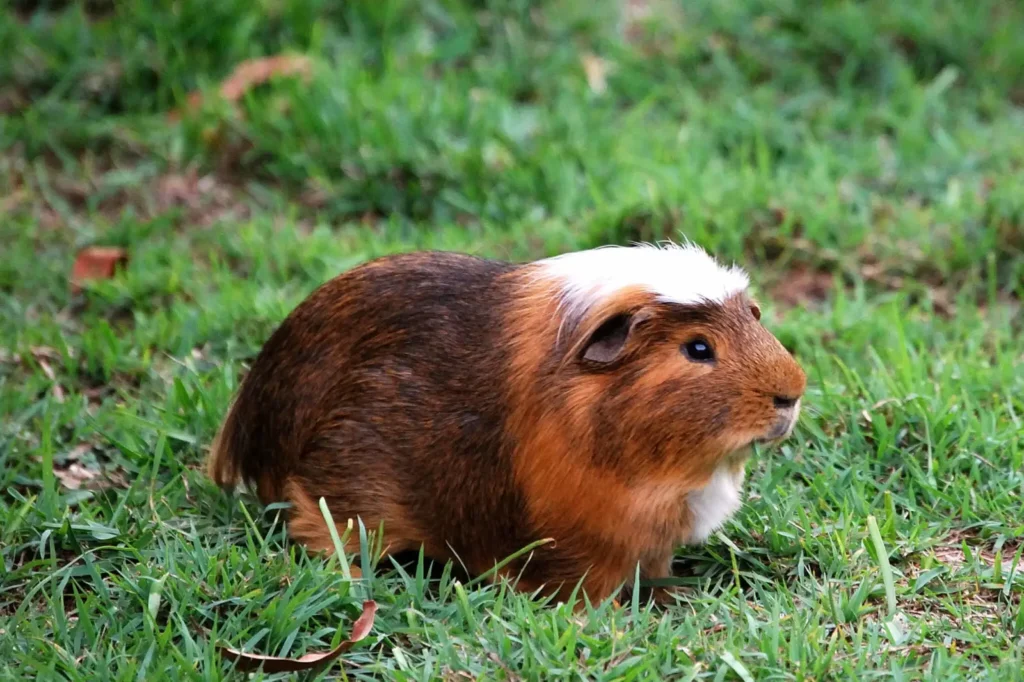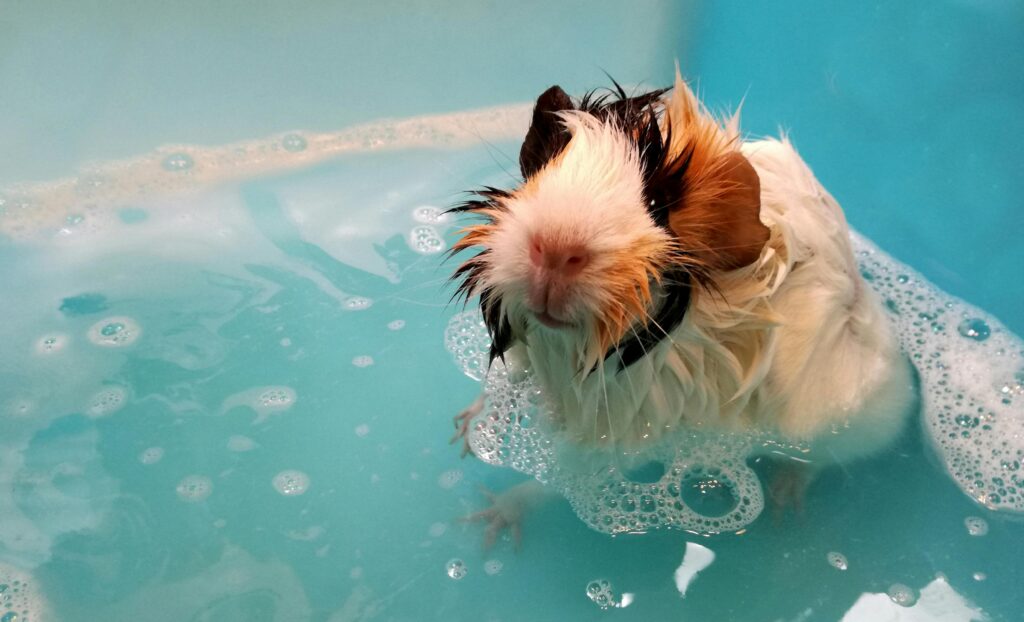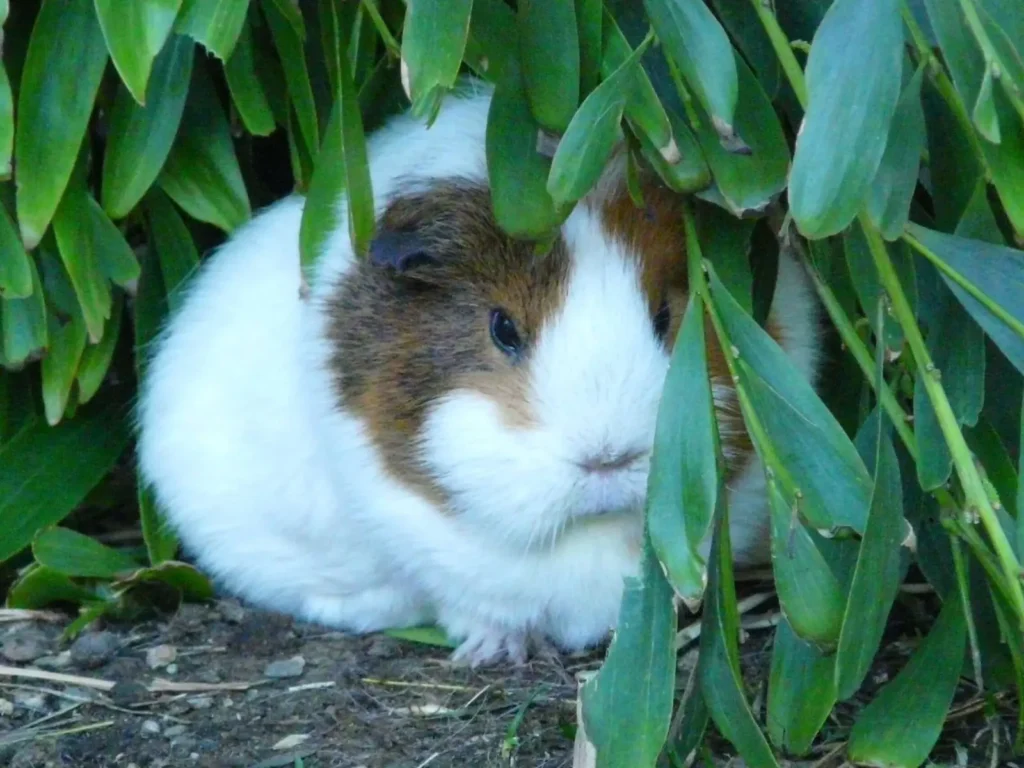Guinea pigs are extremely social and sensitive animals that need proper care and enough space. Many people dream of a “Cage-Free Guinea Pig Life: Is this really possible?” for their pet guinea pigs. This means that guinea pigs are allowed to move freely in their homes without restricting them to a small cage. But the question is, is this really possible and is it safe and healthy for guinea pigs? The answer to this question is a bit complicated, as it depends on the nature of the guinea pig, the home environment, and the owner’s care.
Guinea Pig Nature and Requirements
Guinea pigs are small, innocent animals. They naturally perceive themselves as weak since they are prey animals and can suffer from insecurity in open spaces. So they need a lot of space and a sense of protection to hide. They cannot jump or climb, so they need the opportunity to move on a wide, flat floor. Guinea pigs are not very clean animals and will urinate and defecate wherever they are. Also, their teeth are constantly growing, so they always need something to chew on.
The following factors are very important for the well-being and mental health of guinea pigs, and are crucial when considering a Cage-Free Guinea Pig Life: Is this really possible?:

Lots of space:
Guinea pigs need a lot of flat space to run, explore, and play. Generally, two guinea pigs require at least 7.5 to 10.5 square feet of space.
Hides:
Since they want to protect themselves from predators, they need multiple safe havens, such as small houses, tunnels, or cardboard boxes.
Controlled Temperature:
Guinea pigs are very sensitive to temperature changes. Temperatures below 15°C (59°F) and above 26°C (79°F) can be harmful to them, even causing heatstroke. The ideal temperature for them is 18-24°C (64-75°F).
Protection:
You need to ensure their complete protection from cats, dogs, or other predatory animals. They should even be kept at a safe distance from young children.
Cleanliness:
Guinea pigs produce a lot of urine and feces, so it is important to clean their living space regularly. In a dirty environment, their feet may get infected, a condition known as ‘bumblefoot’.
Balanced Food and Vitamin C:
They regularly require an adequate amount of hay (Timothy Hay), and vitamin C-rich vegetables and fruits (e.g., bell peppers). Guinea pigs cannot produce Vitamin C, so it is essential for them to get it through their diet.
Cage-Free Guinea Pig Life: Is this really possible? – Challenges and Considerations
A complete Cage-Free Guinea Pig Life: Is this really possible? is quite difficult to live and it requires a lot of preparation. Some challenges and considerations are discussed below:
Insecurity and Predators:
Guinea pigs feel unsecured in open spaces. If they do not have enough space to hide, they may suffer from mental stress. Also, if there are other pets (such as dogs or cats) at home, they may pose a serious danger to guinea pigs. Protecting them from predators’ attacks is a major challenge.
Household Damage and Dangers:
Guinea pigs love to chew on everything. Electrical wires, furniture legs, books, bathroom soap – whatever comes within their reach, they can chew and destroy. Chewing electrical wires can be life-threatening for them. Also, swallowing small items can cause digestive problems or stomach blockages.
Cleanliness:
Guinea pigs will urinate and defecate wherever they are. It would be very difficult to keep the whole house clean. If their waste accumulates, odor can spread and pathogens can nest. Soft absorbent materials (e.g., fleece or paper bedding) should be used on the floor and cleaned regularly.

Temperature Control:
Maintaining a certain temperature throughout the house can be difficult, especially in warm climates like India. It is important to protect them from direct sunlight or cold drafts in winter.
Medical Emergencies:
If guinea pigs roam freely in the room and get sick or get hurt, it may be difficult to find them. Lack of rapid treatment can complicate the situation.
Alternatives and Practical Approaches to a Cage-Free Guinea Pig Life: Is this really possible?
While a full Cage-Free Guinea Pig Life: Is this really possible? is difficult, it is possible to give guinea pigs the opportunity to move in a large, safe, and controlled environment. This can be called “free-roam” or “semi-cage-free.” The following steps can be taken for this:
Safe, Enclosed Play Area:
A specific part of the room can be made a safe play area for guinea pigs. It can be surrounded by a large fence or playpen. In this area, there should be no electrical wires, poisonous plants, or dangerous items like chewables.
Plenty of Shelter:
A large number of hiding places, tunnels, and toys should be kept in the play area so that they feel safe and entertained.
Regular Observation:
When guinea pigs are out of the cage, it is important to keep a constant eye on them. Especially if there are young children or other pets at home.
Litter Training:
Although guinea pigs are not completely litter-trainable like cats, they can be encouraged to urinate and defecate in certain places. Some litter boxes or urine pads can be placed in their play area.
Floor Covering:
Where the guinea pigs will roam, floor coverings that are soft, absorbent, and easy to clean should be used, such as fleece or washable mats.
Environmental Control:
Keep in mind that the temperature of the room is comfortable for guinea pigs. Avoid direct sunlight or drafts.
Keeping guinea pigs in India can be a challenge, as the availability of their suitable food here is low, and finding a guinea pig-expert veterinarian is difficult. Warm weather is also a big problem. Therefore, if a Cage-Free Guinea Pig Life: Is this really possible? is not feasible, it is important to create a large, comfortable, and well-ventilated cage or custom-made enclosure, where they can move independently and meet all their needs. The internal environment inside the cage should also be monitored to ensure it is attractive and safe for them.

Conclusion:
Although a complete “Cage-Free Guinea Pig Life: Is this really possible?” is theoretically possible, it practically faces many challenges and requires intensive care and a very safe environment. In most cases, a large, protected, and clean “playpen” or “enclosure” can be the best option for guinea pigs, which gives them both adequate space and a feeling of protection. Owners should prioritize the needs and protection of their guinea pigs and create an environment where they can live a healthy, happy, and safe life.

